Artalistic takes you on a journey through the history of Land Art or Earthworks. This largely American movement sprung into being in the late 1960s and incorporates elements from the environmental movement of the time and minimalism. Find out about the Land Art movement’s most pivotal artists and much more!
What is Land Art or Earthworks?
Definition, concepts and objectives
Artists who rejected the commercialization of art created the first pieces of Land Art or Earthworks in the late 1960s. These artists wanted to bring art out of galleries and museums, making it more accessible to everyone. This movement was an offshoot of Conceptualism and Minimalism while also embracing ideas from the environmental movement. This art form is made directly in the landscape, sculpting the land into earthworks or making sculptures using everyday materials.
Earthworks often incorporate natural materials such as tree branches, foliage, hay, rocks, gravel and soil among other things. These natural installations evolved over time and were often ephemeral. The key element that can be found in most Land Art is its capacity to integrate perfectly with nature. The pieces often take inspiration from prehistoric artworks such as Stonehenge.
The concept behind Land Art
Land Art was conceptualized by a group of artists who wanted to establish alternative modes of artistic expression and ways to remove art from the commercial system. They achieved this by opposing the traditional perception of exhibition spaces and the permanency of art.
Land Art is an important chapter in the History of Art and is one of the most successful attempts to go beyond the hermetic, commercial art sector.
Famous Earthwork designers
Land Art emerged at the end of the 1960s during the Earthworks and Back-to-the-Landscape exhibitions held at the Dawn Gallery in New York. This movement dovetailed the advent of our modern consumer society.
The pioneers of this movement were Robert Morris, Claes Oldenburg, Walter De Maria, Robert Smithson and Michael Heizer.
The top 5 Earthwork installations
Artalistic has rounded up the following top five Land Art pieces:
Broken Circle by Robert Smithson
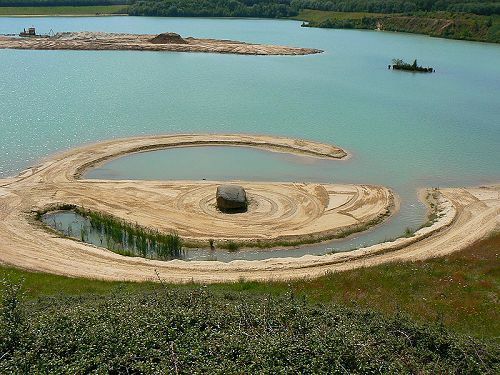
The American artist Robert Smithson is considered to be one of the founders of Land Art. He became famous in the early 1970s with works such as Spiral Jetty and Broken Circle. The latter was created in 1971 in Emmen, the Netherlands, as part of the international exhibition Sonsbeek 71. For this piece Smithson created a sand jetty that runs around a rock, forming a yin yang like symbol. This large 131-foot installation also makes reference to the system of dams (Zuiderzee Works) used in the Netherlands for land reclamation and water drainage.
Striding Arches by Andy Goldsworthy
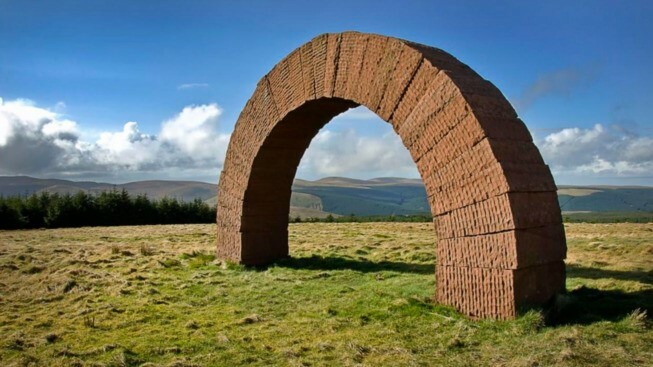
Andy Goldsworthy is possibly one of the greatest artists from the Earthworks movement. He used various natural materials to create his installations, including: dead leaves, branches, ice, stone, etc. This British artist’s goal was to remind the viewer of nature’s fragility. Goldsworthy created both large and small-scale pieces, ephemeral works and permanent indoor and outdoor works. The main goal of his work was to, “collaborate with nature.” His Striding Arches series is a collection of permanent installations that uses large red sandstone blocks to create arches, each weighing several ton. They are located on the hills of Cairnhead, in Scotland.
The Green Cathedral by Marinus Boezem: a monumental Land Art installation
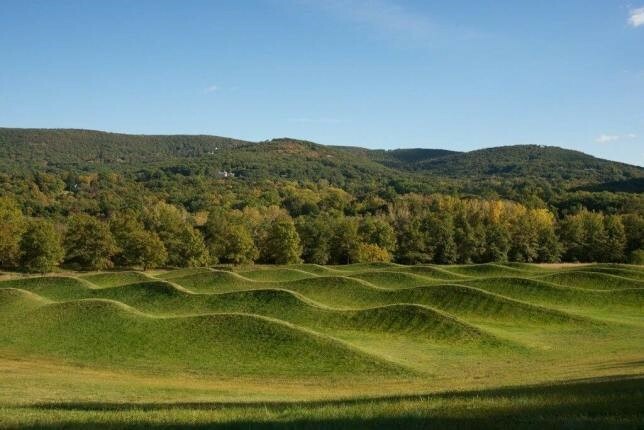
The Green Cathedral is located near Almere in the Netherlands. It is an architectural garden created by Marinus Boezem in 1987. The Dutch artist was inspired by the architectural beauty of Notre-Dame de Reims cathedral and took it upon himself to recreate its outlining structure with 178 poplar trees. This piece is ever evolving and has grown since the beginning of the project - it now spans over 500 feet long and 100 feet high!
Wave Field by Maya Lin
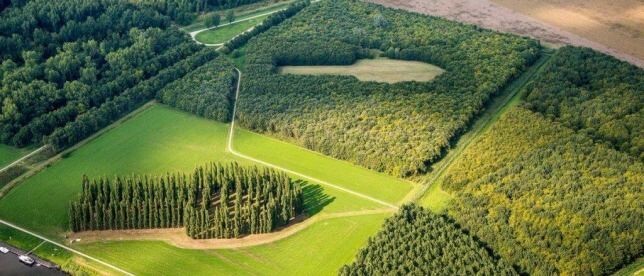
Maya Lin's work has always been intimately linked to the natural landscape. In 1995, this American architect created Land Art and outdoor art for the Storm King Park in Upstate New York. This piece is comprised of 13-foot high mounds of dirt covered over with grass. This installation blends harmoniously with the Hudson Valley Mountains that can be seen behind them while simultaneously imitating waves in the ocean.
The Umbrellas by Christo & Jeanne Claude
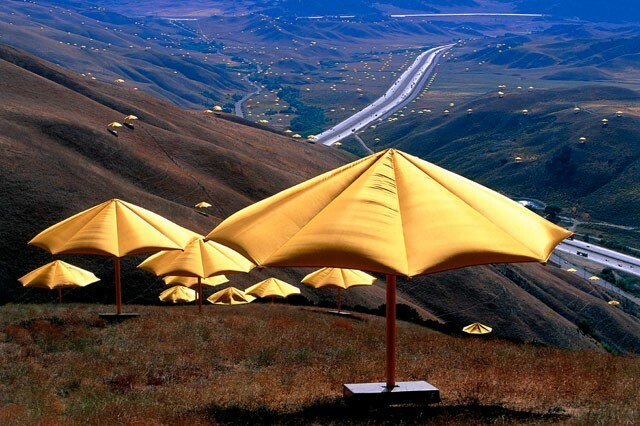
The Earthwork Art duo Christo and Jeanne Claude helped bring Land Art into the mainstream media. They became famous for wrapping Paris’ Pont Neuf in 1985. Christ & Jeanne Claude have always been intrigued by the ephemeral and most of their massive installations revolve around this theme. In 1984, they created The Umbrellas, a temporary installation that involved placing and opening approximately 3,100 yellow and blue umbrellas in two locations - Hitachiota, Japan and Ibaraki, California. The objective was to reflect on the similarities and differences in the ways of life and the use of land in two inland valleys.
Summer weather is finally here and lockdowns are steadily but surely coming to an end - so enjoy spending time outdoors and try and find some Land Art installations near you. On rainy days, you can quench your thirst for fine art by browsing the pages of our website dedicated to selling paintings, sculptures, drawings, photographs and limited edition prints by well-established and emerging artists!
 English
English Français
Français
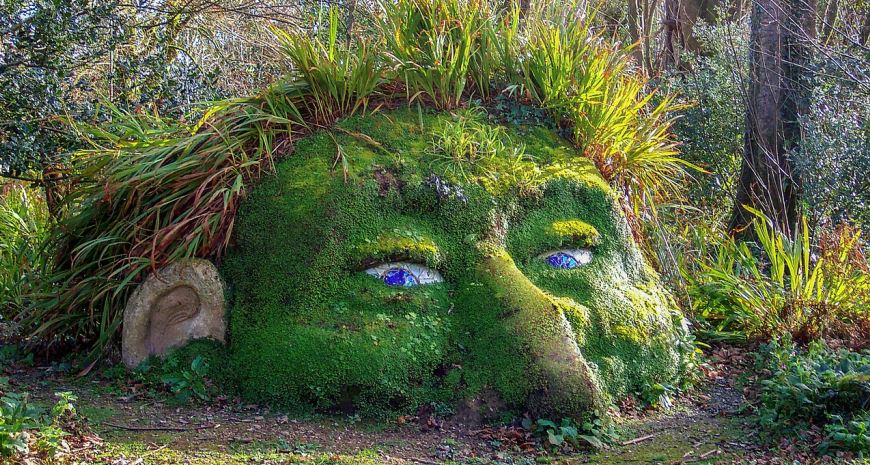

You must be logged in to post a comment.
Click here to log in